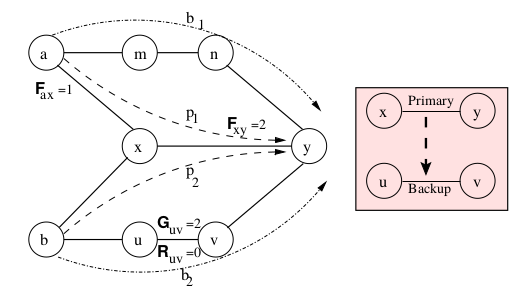
Links
Abstract
Using multicast for serving popular movies on demand reduces load on the server and the network by eliminating redundant packet transmission. To permit clients to arrive at times of their choosing, periodic rebroadcast is necessary. In addition, splitting the transmission over multiple multicast groups reduces the cost of rebroadcasting by allowing clients to unsubscribe from groups in which they are no longer interested.</p><p>The focus of this paper is to develop techniques for efficient Media-on-Demand delivery to asynchronous clients over multiple multicast groups. We start by describing an existing periodic multicast technique that is near-optimal in terms of server bandwidth. Given a small number of groups $\alpha$, we then show how to distribute content over these groups in a way that minimizes network impact. We present a theoretical analysis of the performance gains and compare these predictions with simulations over real and generated network topologies. We find that using even a small number of multicast groups provides significant reduction in overall network bandwidth.
BibTeX (Download)
@inproceedings{Waldvogel2001Efficient,
title = {Efficient Media-on-demand over Multiple Multicast Groups},
author = {Marcel Waldvogel and Ramaprabhu Janakiraman},
url = {https://netfuture.ch/wp-content/uploads/2004/norden04routing1.pdf},
year = {2001},
date = {2001-01-01},
urldate = {1000-01-01},
booktitle = {Proceedings of Globecom 2001},
address = {San Antonio, Texas, USA},
abstract = { Using multicast for serving popular movies on demand reduces load on the server and the network by eliminating redundant packet transmission. To permit clients to arrive at times of their choosing, periodic rebroadcast is necessary. In addition, splitting the transmission over multiple multicast groups reduces the cost of rebroadcasting by allowing clients to unsubscribe from groups in which they are no longer interested.</p><p>The focus of this paper is to develop techniques for efficient Media-on-Demand delivery to asynchronous clients over multiple multicast groups. We start by describing an existing periodic multicast technique that is near-optimal in terms of server bandwidth. Given a small number of groups $alpha$, we then show how to distribute content over these groups in a way that minimizes network impact. We present a theoretical analysis of the performance gains and compare these predictions with simulations over real and generated network topologies. We find that using even a small number of multicast groups provides significant reduction in overall network bandwidth.},
keywords = {Multicast, Video-on-Demand},
pubstate = {published},
tppubtype = {inproceedings}
}



